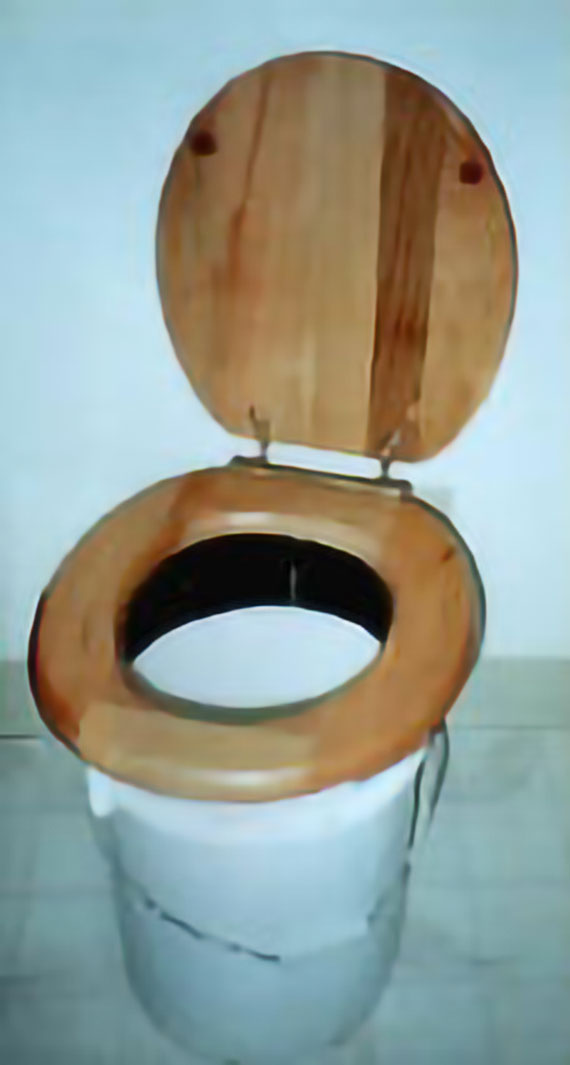Definitions
- Waterless Toilet- Consists of two or more 5-gallon buckets, sawdust or other organic material (lime or wood chips), and a toilet seat. Since it does not use water like the toilets that most of us know, they save clean water, a limited resource.
- Humanure- provides valuable source of nutrients needed for compost. It contains high levels of nitrogen and is easily collected using a waterless toilet.
- Compost- also called humus, an organic fertilizer which replenishes and improves the quality of soil. This type of fertilization is useful in areas where there is no money to spend on expensive fertilizers and pesticides. Organic farms or gardens can use this too in order to have a healthy growth of plants.
Abstract
Composting and fertilization are important steps to organic farming and gardens. In order to get the level of nitrogen needed, one may use a waterless toilet and add the product to their compost pile.
Methods
The main problem with a composting toilet is the odors and pathogens associated with it. In order to keep the odor under control, it is important to apply a covering of sawdust or other high-carbon material whenever the waterless toilet is used. This will help reduce the odor and also keep the waterless toilet and compost pile hygienic. Another method that should be used in conjunction with the high-carbon material is ventilation. This can be as simple as a gap between the wall and the roof or more complex like an electrical ventilation fan.
Social Context
In America people are less likely to use this method of conservation because of their extraordinarily high standard of living. This would be very useful in many parts of America, especially in the areas where there is seasonal water shortage. Droughts would not affect the area as much if everyone used this type of toilet because of the water saved from using the waterless toilet.
There are many examples of waterless toilets being used around the world. The C.K. Choi Building at the University of British Columbia contains ten composting toilets which are used for 300 full time employees. Also the IslandWood School on Bainbridge Island in Washington relies soley on composting toilets. Although the composting toilets that are used in these buildings are not as simple as the waterless toilet that is explained in this article, they are useful and more sanitary for the large number of people who use them.
The method explained in this article is more likely to work in less developed countries. Some places are currently using latrines and other methods of waterless toilets, so they would gain from their wastes being used as compost material and enriching their soil.
Composting Process
Depending on your location, the composting process can take from three months to a few years depending on climate, temperature and composting system. There are two ways to kill the pathogens in the waste. One method is to allow the waste to be a low-temperature where it is left long enough for the pathogens to break down naturally. There are also hot, thermophilic toilets which heat the waste to a temperature high enough to kill the pathogens. In order to preserve the majority of nitrogen (90%) and phosphorus (70%) it is important to preserve the urine. An advantage to this method of composting toilet is that it saves these valuable nutrients for reuse instead of allowing them to leach into the groundwater.
Build Your own Waterless Toilet
A simple version of the composting toilet is the waterless sawdust toilet. This utilizes two 5-gallon buckets. One holds sawdust (to be used to cover wastes) and the other has a toilet seat fitted to it for use as the waste receptacle.
References
"How to Make and Use a Simple Sawdust Toilet," 2005. Available: http://ersson.sustainabilitylane.com/sawdust.htm
Composting Toilet World "An Introduction," 2007. Available: http://compostingtoilet.org/compost_toilets_explained/what_is_a_composting_toilet/index.php
This fully editable article includes content from an original document. The ported version of the original document is protected at this page Recycling agricultural wastes to produce hot water (original)
